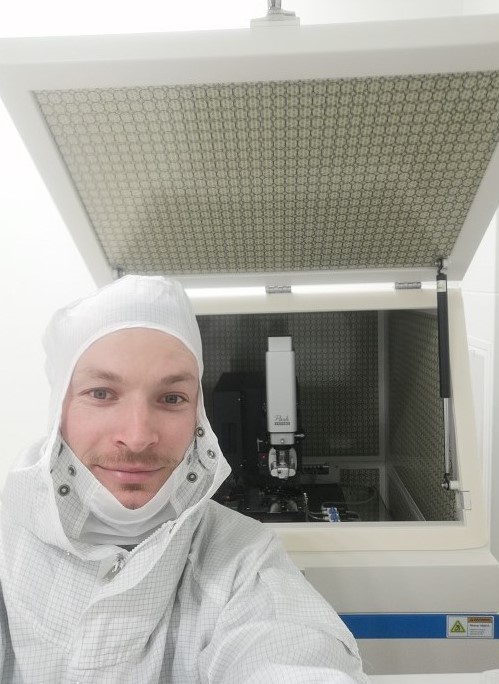
Felix Pertl was born and raised in Austria. He obtained a master’s degree in physics with a major in surface science and semiconductor physics from TU Graz, Austria. Now he moved to Vienna to pursue his Ph.D. at IST Austria. After 3 successful rotation projects spanning from quantum dots, superconductivity to contact electrification (CE), he joined the soft matter and complex materials group of Scott Waitukaitis. His research focuses on studying contact electrification with Kelvin Probe Force Microscopy. Outside the lab, he likes to play tennis, skiing, and hiking.
1. Please summarize the research you do and explain why it is significant.
Everyone has experienced walking across a rug and then being shocked when they touch a metallic surface. The transfer of charge that occurs with the rug is known as contact electrification (CE). Although CE is a ubiquitous and widely studied phenomenon, it is poorly understood. I study the patterns of charge that appear on a surface after CE using Kelvin Probe Force Microscopy. These insights at the nanoscale promise to shed light on this universal yet puzzling phenomenon.
2. How might your research be used?
Recently, I have developed a rigorous technique for how to convert KPFM potential maps into charge density maps. Previously, KPFM with insulators had mostly reported just the potential or extracted charge in an ad hoc way. With my technique, we can now quantitatively do CE experiments at the nanoscale.
3. Why is the Park AFM important for your research?
The workhorse driving my entire research project is the NX20. Without this device, we could not even dream of measuring the quantities we do.
4. What features of Park AFM are the most beneficial and why?
The single-pass mode combined with Powerscript is extremely useful for me. Not only is single-pass mode twice as fast as double-pass mode, but it also allows to record the KPFM potential signal without a lift step and therefore at closer proximity to the surface. Powerscript allows me to schedule multiple measurements to study time-dependent discharging events, allowing me to catch my breath.
